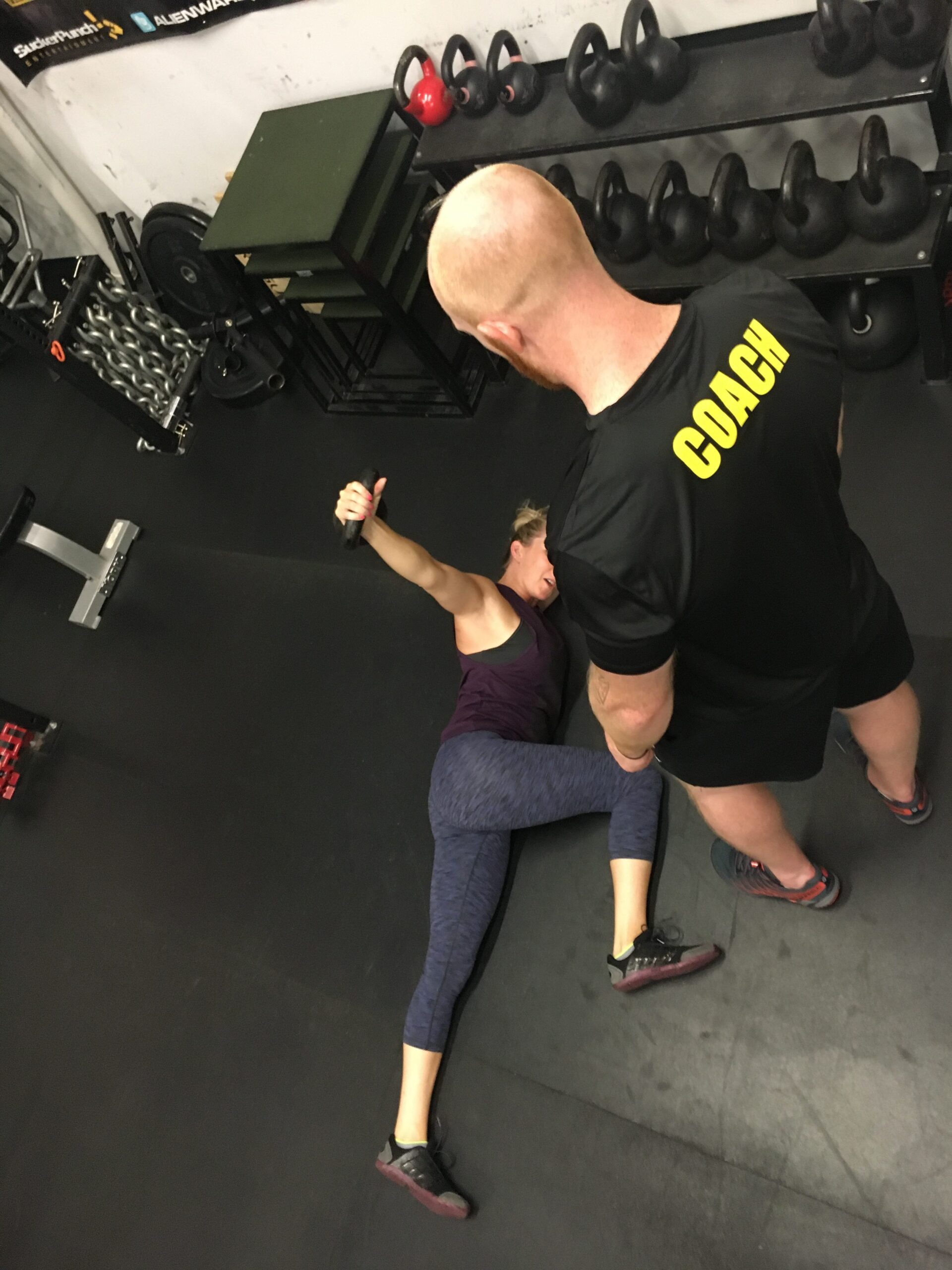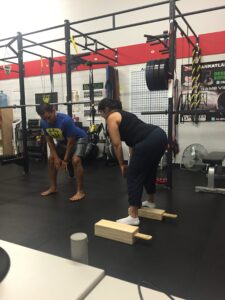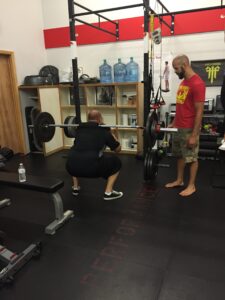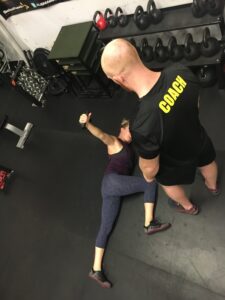
6 Objectives for Successful Training Sessions
Today’s guest post comes from Virginia-based strength and conditioning coach, Todd Bumgardner. I think it’s very useful material for all the trainers and strength and conditioning coaches out there. Enjoy! -EC
It’s rare that large successes are accomplished without an idea of what success will look like. Sure, there are the occasional one-off miracles that happen when people swing hard with good intentions, but I don’t believe even those were truly accomplished without at least a loose plan that existed in the action taker’s head. It’s far more advantageous, and consistent, to materialize an actionable plan, with clear objectives, in the real world.
We often think in terms of plans and objectives when examining our businesses, or our financial goals, but a lot of coaches and trainers miss on the powerful outcomes elicited by setting training session objectives. I’m not just talking quantitative outcomes for our clients, but objectives that guide our coaching behaviors. Defining a list of session objectives, for you and your coaches, can dramatically improve your clients’ experience and results.
How We Did It
Chris Merritt and I own and operate Strength Faction together, while also tag teaming the leadership roles at Beyond Strength Performance NOVA—our small slice of semi-private training heaven in Dulles, VA.
The gym’s been running strong for five years now and has a great culture that’s focused on continual progression toward improvement. So we were inherently doing a lot of coaching things right. That set the context for our objectives discussion. We held it at one of our Friday in-services and we opened the floor to all the coaches. Then we simply asked, “What should our objectives be for running a successful training session?”

We involved the guys in the discussion because they coach just as many sessions as we do; who are we to stand in dictatorship? Besides, the opportunity to give input creates buy-in. When folks feel like they have responsibility, and that they’ve contributed to a cause, they’re more likely to take things seriously and give optimal effort.
The outcome: a lot of what we were already doing correctly ended up on paper and we sprinkled in a few more bits to improve our process.
Here’s what we ended up with.
Personal Interaction with each Client by each Coach
We schedule no more than six clients per time slot, and maintain a coach to client ratio of one to three, so we have innumerable opportunities for personal interaction. We have to capitalize on that.
Each coach must, at least briefly, interact with every client that walks through the door during his shift. Our goal at BSP NOVA is to continually improve our interconnectedness and sense of community, so we prioritize actions that help us accomplish that end. It’s not too much to at least ask how someone’s day has been.
Sure, this might sound like a no-brainer, but any coach that’s worked in a busy semi-private training gym knows how easy it is to lose focus and miss out on connecting with people. So we make it a focus and set the intent on connection at the beginning of every shift.
No Injuries
This speaks to our vigilance. Are we paying attention to what our people are doing? Are we checking positions? Are we updating programs based on the clients’ current readiness and ability?
If we’re answering yes to all of those questions there’s a high likelihood that we’ll avoid injuries during that shift. If we answer no, the chance of injury creeps up. Training injuries should be a rarity; maintaining focus keeps it that way.
Be the Best Part of Someone’s Day
We want our gym, our little slice of semi-private training heaven, to be a place of respite from the outside world, where folks can lay down their burdens, train, and have a good time. We’re ever aware that people don’t have to train with us, that Northern Virginia is rife with fitness options, and that we have to give them a reason to choose us over and over again.
Beyond that, our job as coaches is to lift others up. Every day, we have an opportunity to make the world a better place one interaction at a time. Making someone laugh, showing them that you care, or listening to a story that they really want to tell goes a long way toward improving someone’s day. Do that over and over again, with all of the clients that walk through the door, and we’ll make great strides toward making the world a better place.

Focus On Getting Better at One Aspect of Your Coaching
Kaizen, baby! We’re getting one percent better every day. This requires continual self-assessment and acknowledgement of our weak points. Each day we set a focus that toggles between what am I good at, and, where do I need to improve?
It begins with being open to constructive criticism from your leaders and peers and comfort with self-honesty. Nail those, make honest self-assessments, and attack improvement at one aspect of coaching every day.
Sweep the Sheds
I’m personally a huge All Blacks fan, and as a staff we love the book Legacy, James Kerr’s book about their culture, so we’ve focused hard on integrating the lessons from their phenomenal organization into our every day actions. We’ve incorporated “sweep the sheds,” The All Blacks humility-promoting mantra, into our everyday mindset.
Here it is:
“Sweeping the sheds. Doing it properly. So no one else has to. Because no one looks after the All Blacks. The All Blacks look after themselves.”
Their point is to never be too big to do the small things while taking personal responsibility and acting with self-reliance. We’ve internalized the same point—but we’ve also extended it to mean something personally for us.
For us, sweeping the sheds also means taking as much as you can off of your teammates’ plates. If you can do a job that helps everyone else out, do it; don’t leave it for the next guy—even if it’s not necessarily “your job.”
Put Clients in the Best Positions to be Successful
Mentally and physically, it’s our job to put our clients in the best positions to be successful while they’re under our supervision. This means checking in with their state of mind and training readiness. It also means altering exercise selection if a given movement doesn’t fit for a certain person right now.

Checking in with clients first thing, and as the session continues, is a must. Without those continual assessments we can’t know whether or not we’re putting people in the best positions to be successful. And we can’t live with not doing that.
Progress in Form and Exercise Proficiency from Set to Set
Our last objective fits nicely with the one that precedes it. If we’re paying attention to our people, and they’re getting better each set, even minutely, we’re doing something right. Not every rep is going to be perfect, and the same is certainly true for every set. But if we’re improving incrementally each time we commence movement, all is right with our tiny, little world.
Set Some Objectives
These six points are by no means the end-all-be-all of training session objectives, but they’re solid examples and they work for us at our gym. Now, sit down with yourself, or your people, and list the objectives that make your training sessions successful.
About the Author
Todd Bumgardner, MS, CSCS is a co-founder of Strength Faction, an online coaching program for strength coaches and personal trainers that helps fitness industry folks transform their bodies and their coaching. He and his partner, Chris Merritt, just released a great, free E-book on how to keep your training on track, even while you’re training all of your clients. You can download it here: Train Yourself…Even While You’re Training Everyone Else.


